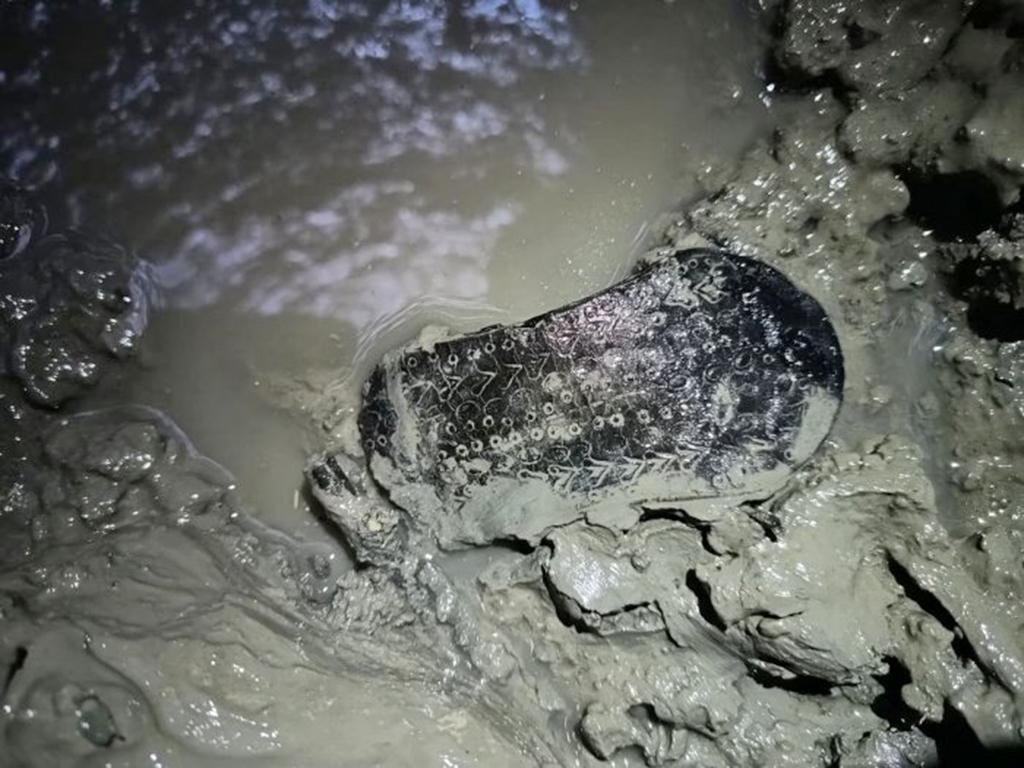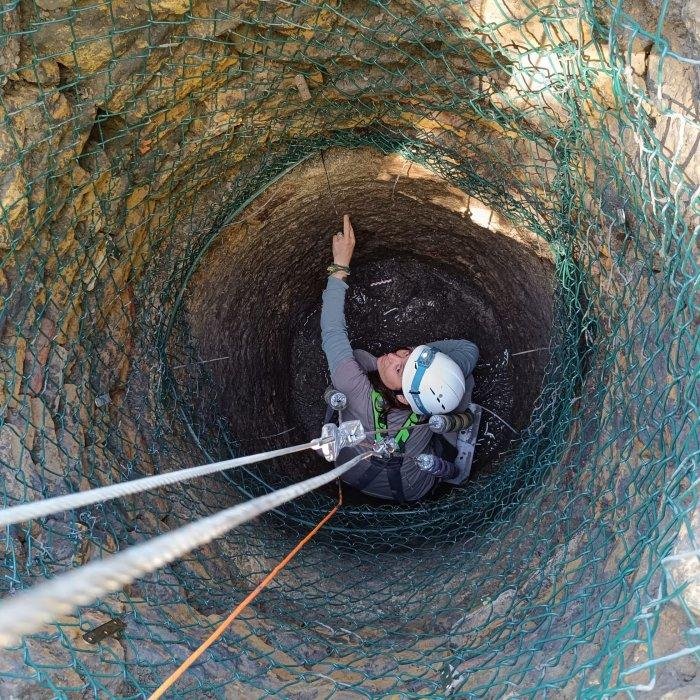Archaeologists have unearthed a remarkably well-preserved 2,000-year-old Roman sandal in Lucus Asturum, a Roman settlement in modern-day Lugo de Llanera, northern Spain.
 The Roman sandal discovered in Spain. Credit: Esperanza Martín Hernández
The Roman sandal discovered in Spain. Credit: Esperanza Martín Hernández
The discovery came as part of an ongoing excavation led by archaeologist Esperanza Martín Hernández, who also located a large house with a central courtyard and a well at the site in 2021. This year’s explorations involved the use of a pulley system to access the well’s depths while minimizing damage to the artifacts within.
The sandal, despite its apparent simplicity, stands as a unique archaeological object due to its intricate decoration. Adorned with circles, ovals, and falciform figures, it is the only decorated Roman sandal known in Hispania. In this region, there are fewer than 20 preserved Roman sandals, making this discovery a standout. Its exceptional state of preservation can be attributed to the anaerobic environment created by the silt that filled the well over time, effectively preventing the degradation of organic materials like leather.
Martín Hernández explains, “The remains we found, due to the anoxia generated by the high water table in the area, are in an exceptional state. The silts have created an anaerobic environment thanks to the plasticity of the clays that compose them, so the organic materials have been perfectly preserved.”
 Archeologist Esperanza Martín Hernández descends into the well discovered in Lugo de Llanera. Credit: Ángel Villa
Archeologist Esperanza Martín Hernández descends into the well discovered in Lugo de Llanera. Credit: Ángel Villa
At a depth of about three meters, archaeologists also extracted part of the well’s wooden cover, a tiled floor for silt separation, and an array of artifacts, including ceramic jars, seeds, chestnuts, pine nuts, mollusks, the remains of domestic and wild fauna, an acetre (bronze cauldron), a small metal ring, and the sandal.
The Roman city of Lucus Asturum, active between the first and fourth centuries CE, held a significant place as an administrative center and communication hub in the northern Iberian Peninsula. Its historical importance is underscored by its mention in the work “Geography” by the Greek polymath Ptolemy.
The newly discovered sandal offers a glimpse into the life of an individual who descended into a well within Lucus Asturum approximately 2,000 years ago to extract mud contaminating their home’s water supply. Although the specific idenтιтy of the sandal’s owner remains unknown, Hernández suggests that they were likely a person of high purchasing power due to the range of materials recovered, which reflects extensive commerce in the area.
Presently, the Roman sandal is being refrigerated to prevent degradation until it can be restored and displayed in the Archaeological Museum of Asturias.





